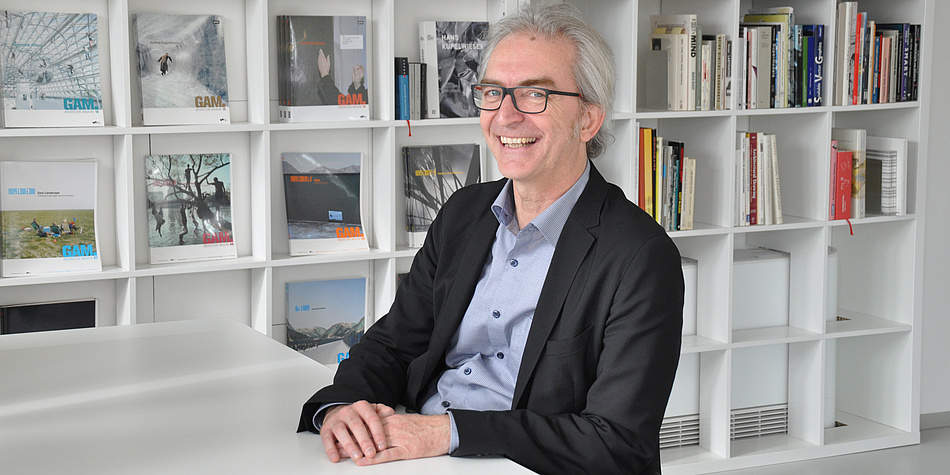News+Stories: You conduct research in the field of digital construction, or to put it more precisely, “augmented architecture”. What’s this all about?
Hirschberg: We see augmented architecture as a critical guiding concept for the application of digital media in architecture: from designing with digital design tools to new forms of networked collaboration to building with robots or sensors and actuators in buildings. Augmented architecture means that a genuine added value is created, an extension of architecture. At the Institute of Architecture and Media (IAM) at TU Graz, we develop many things in virtual space, which means we simulate things on the computer. But we’re also very keen on implementing our ideas in prototypes. Materiality with its one to one is a completely different thing to the abstraction on the computer. That’s why digital fabrication is a special challenge. You can develop new, sustainable construction methods, but only when you think about the material and the machinery right from the start.
In addition to developing novel construction methods, we also deal with special forms of visualisation. At the moment we are conducting research in the Austrian Science Fund “Nagara Architecture” project and among other things how cultural monuments can be digitally explained, preserved and communicated. Our research spectrum at the IAM is broad, but in all cases it is about digital media opening new doors.
Switch to the "Face to face" interview with Urs Hirschberg on the TU Graz website to get to know which role environmental protection plays in digital planning, which digital methods find their way into architectural studies today and why it is okay to steal ideas – if you follow the rules.
